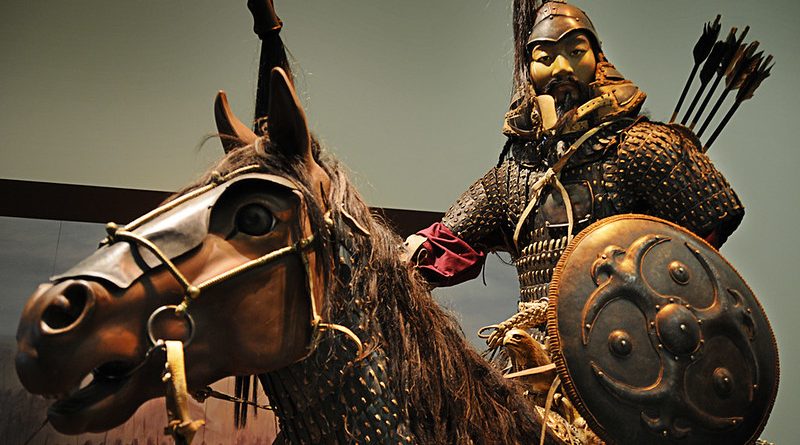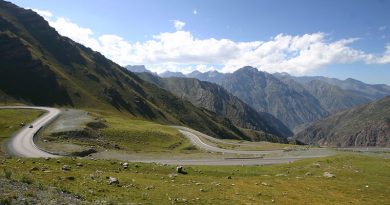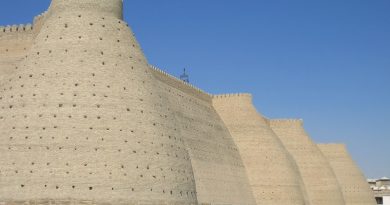The Barbarian Emperor of Mongolia
History Facts
Where: Erdene Zuu, Karakorum, Mongolia, Northeast Asia
When: 12th Century
History: Centre of the Empire of legendary leader Genghis Khan, the national hero – destroyed during Stalinist purges
Go There For: History of a misunderstood man
Genghis Khan is not only the most famous – or infamous – name to have come out of Mongolia, but also a name that brings to mind a savage and relentless warmonger. However, to the Mongolian’s he is a very different figure, a king and hero rather than a savage, a force of unity, strength and order. The national adoration for him is blatant; his face appears everywhere, on the notes and on posters all around the capital, a replacement for the pictures of a more modern hero who has now fallen far from favour, Lenin. So why is this barbarian so well loved? Because to the Mongolian’s any barbarism in his actions is more than outweighed by his heroism. He was the man who ruled Mongolia in its greatest days of glory, and although he led an army that slaughtered masses of people in a genocide not seen again until the 20th century, he was known for being just and generous to his own people, and magnanimous in victory. Undeniably, he was one of histories greatest rulers and military leaders.
Before the time of Chinggis Khaan (his official name in Mongolia), the Mongols were simply a loose and almost purely geographically associated group of warring clans. In the late 12th century, a young man named Temujin appeared on the historical scene, and is credited with bringing most of those clans together as a united force. This young man was then given the honorary title of ‘Chiggis Khan’, or ‘universal king’. He founded a cavalry based largely upon the strength of the takhi horses that was to invade his nearest neighbours, China and Russia, and consequently to conquer lands to create an empire that stretched across most of Asia and much of Europe. He died in 1227, leaving his grandson, Kublai Khan, as leader of the largest empire the world has ever known.
The Downfall
In the years since, the Mongolians have suffered at the hands of the Manchurians and the Chinese. They managed to gain independence from the Chinese in 1921 with the collapse of the Qing Dynasty, but have suffered since from the Russians under Stalin, and were forced into becoming a Soviet-style republic, from which they only gained release in 1990. Mongolia is now building itself up to its full independent strength, but it’s unlikely ever again to see the glory of the days of Genghis Khan.
Ghengis’ Empire Capital
During his lifetime, Genghis Khan established his capital at Karakorum. He had it constructed in 1220, and was the point from which he ruled his extensive empire. Kublai Khan abandoned it in favour of a new site, in what is now Beijing, and the original capital was ransacked and destroyed in the later Manchurian invasion. All that remains on this spot today is the Erdene Zuu monastery, built from the remains of the original structure in the 16th century, which became the first centre of Lamaism, a derivative of Buddhism, which has since become the predominant religion in Mongolia.
About 100 temples and 300 gers were established within the monastery walls, and 1000 monks would have been in residence at any one time. Stalin’s armies destroyed all but three of the temples, and innumerable monks were killed in the purges of the early 20th century.
Visiting Erdene Zuu Today
Since the 1990’s the monastery has been returned to much of its former majesty, and is once again in use. There are a number of sites around the monastery worth seeing – the three main temples show three stages of life of Buddha – childhood, adolescence and adulthood, while outside the walls just two remain of four ‘turtle rocks’ that were once used to mark the boundaries of the city.
A little further afield, about one and a half miles away in the hills above the monastery is a rock with an interesting myth attached to it. According to legend, all female visitors to this phallic shaped rock must copulate within twenty-four hours, though no-one knows what will happen if this prophesy is or isn’t fulfilled! Possibly this would make a lively location for a first date?…
More Information
Indiana University: Introduction to the history of Mongolia
A brief history of the whole country, from pre-Genghis Khan to present day
Genghis Khan, The Mongols and Asia
A detailed history website, with the complete story of Genghis Khan’s conquests and demise
by Guilia Vincenzi
main image: Genghis Khan and Toghrul Khan, illustration from a 15th-century Jami’ al-tawarikh manuscript By Sayf al-Vâhidî. Hérât. Afghanistan – Bibliothèque nationale de France. Département des Manuscrits. Division orientale. Supplément persan 1113, fol. 105 and [1]., Public Domain, https://commons.wikimedia.org/w/index.php?curid=8752750




